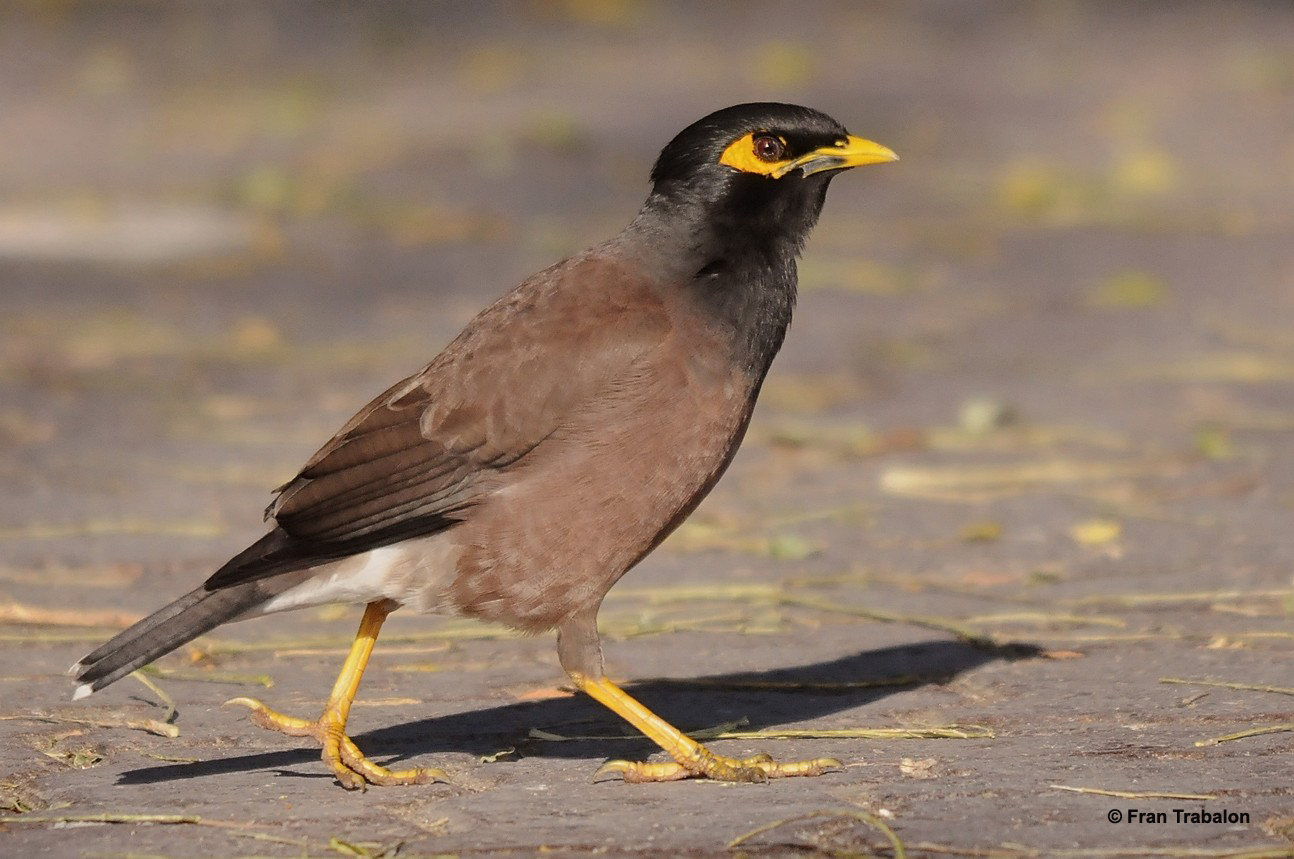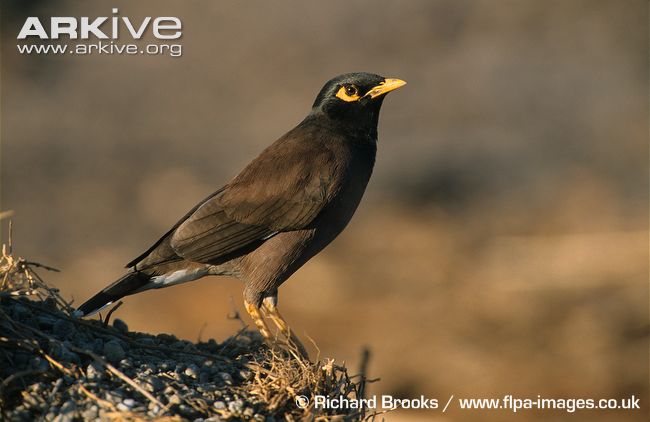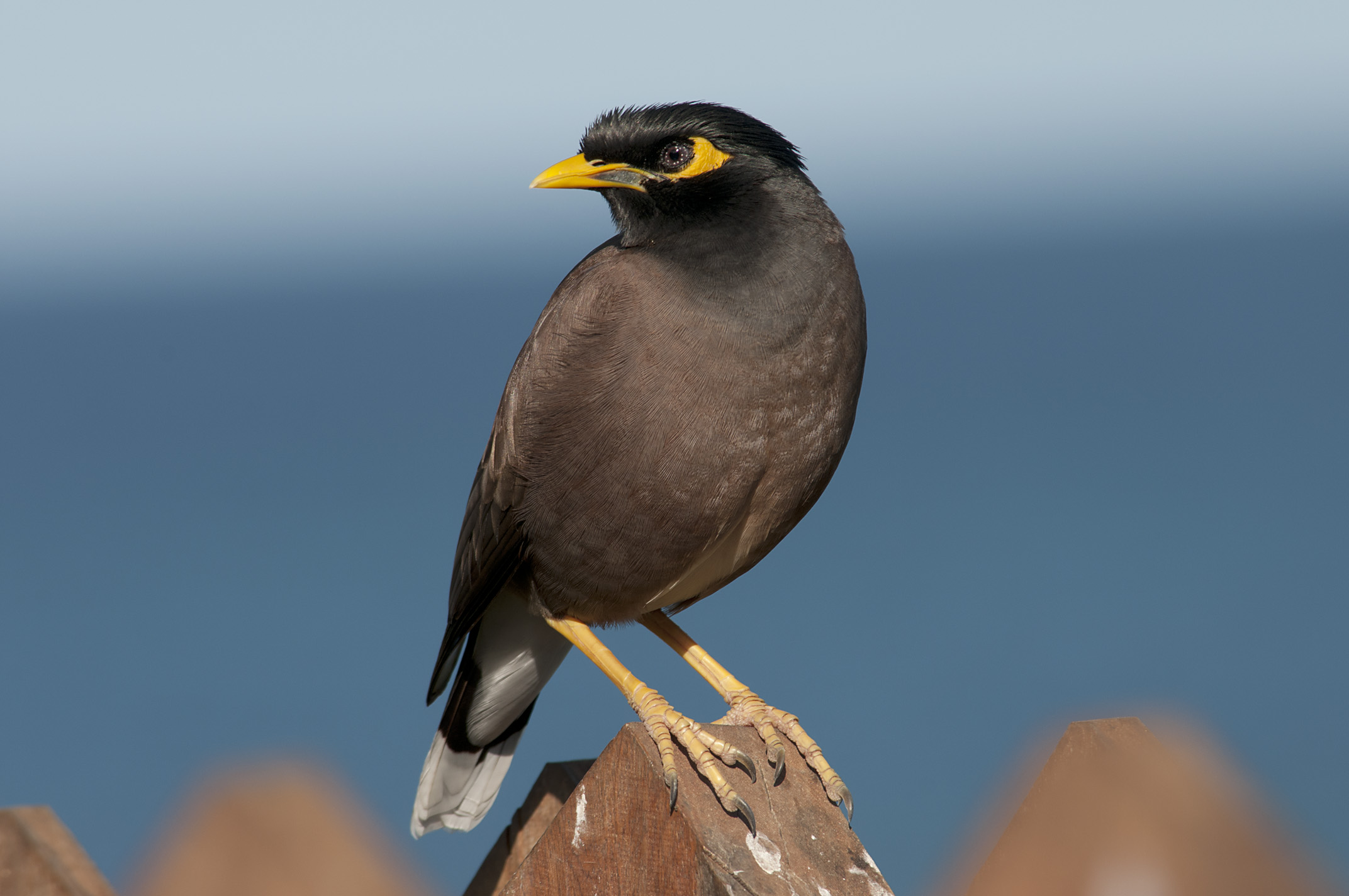
Acridotheres tristis
SUBFAMILY
Sturninae
TAXONOMY
Paradisea tristis Linnaeus, 1766. Two races recognized; see
DISTRIBUTION
.
OTHER COMMON NAMES
English: Indian myna, house myna, common mynah, locust
starling, myna; French: Martin triste; German: Hirtenmaina;
Spanish: Mainб Comъn.
PHYSICAL CHARACTERISTICS
9.1–9.8 in (23–25 cm); weight 2.9–5.0 oz (82–143 g). Sexes
similar; a stocky, brown bird with a glossy black head and
throat, yellow bill, bare yellow skin behind its eyes, and yellow
legs; juveniles are duller.
DISTRIBUTION
Lowlands to 4,500 ft (1,370 m) in southern Asia from southeastern
Iran though Afghanistan, Pakistan, India, Sri Lanka,
southern China, and Vietnam. Introduced and established in
Arabia, South Africa, Madagascar, Australia, New Zealand, Fiji,
Cook Islands, Society Islands, Hivaoa in the Marquesas Islands,
and Hawaii (Midway and from Kauai east). An introduced
breeding population on Kwajalein in the Marshall Islands died
out. A. t. tristis, most of range; A. t. melanosternus, Sri Lanka.
HABITAT
Open habitats including farmlands, cities.
BEHAVIOR
Tame, bold, and noisy; usually seen in pairs or small flocks.
FEEDING ECOLOGY AND DIET
Feeds mainly on ground on insects, but takes small vertebrates,
carrion, occasionally eggs and nestlings of other birds, fruit,
and grain.
REPRODUCTIVE BIOLOGY
Builds bulky nest in tree cavities, niches on buildings, and in
dense vegetation. Clutch of four to five glossy, pale blue eggs
is incubated by both parents for 13–18 days; young leave the
nest as early as 22 days, but may not be able to fly for another
week or more.
CONSERVATION STATUS
Not threatened.
SIGNIFICANCE TO HUMANS
Considered a pest in Australia where noisy winter roosts of several
thousand can occupy city trees and buildings, and also a pest
in many areas where it seasonally may take grain or fruit.
Photo Gallery of - Common myna




 Animalia Life
Animalia Life